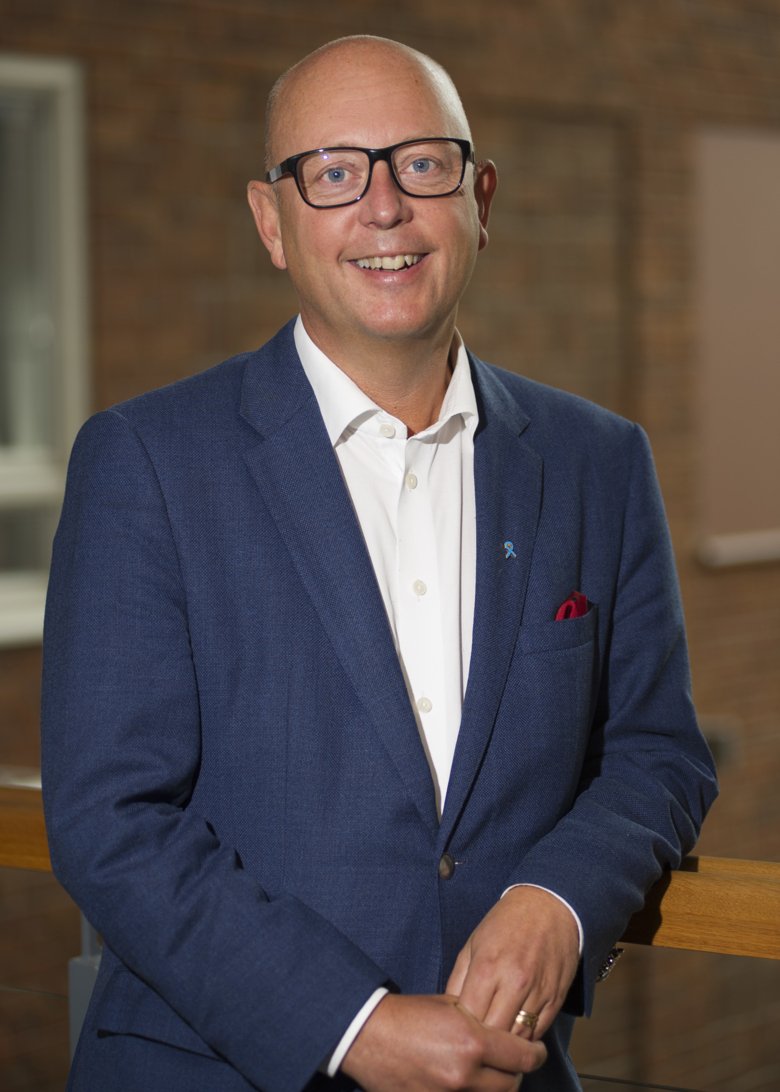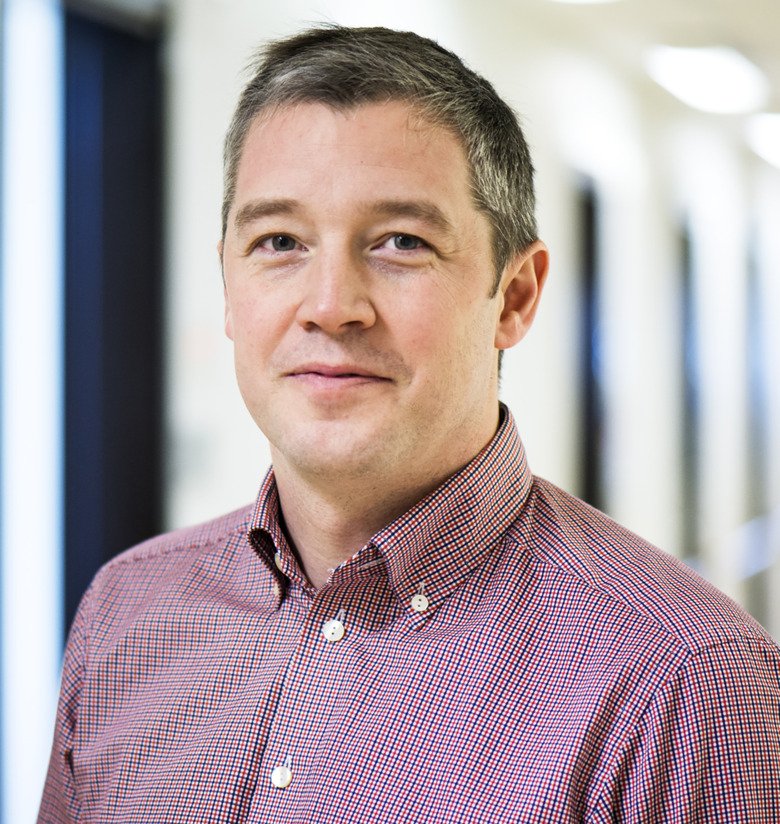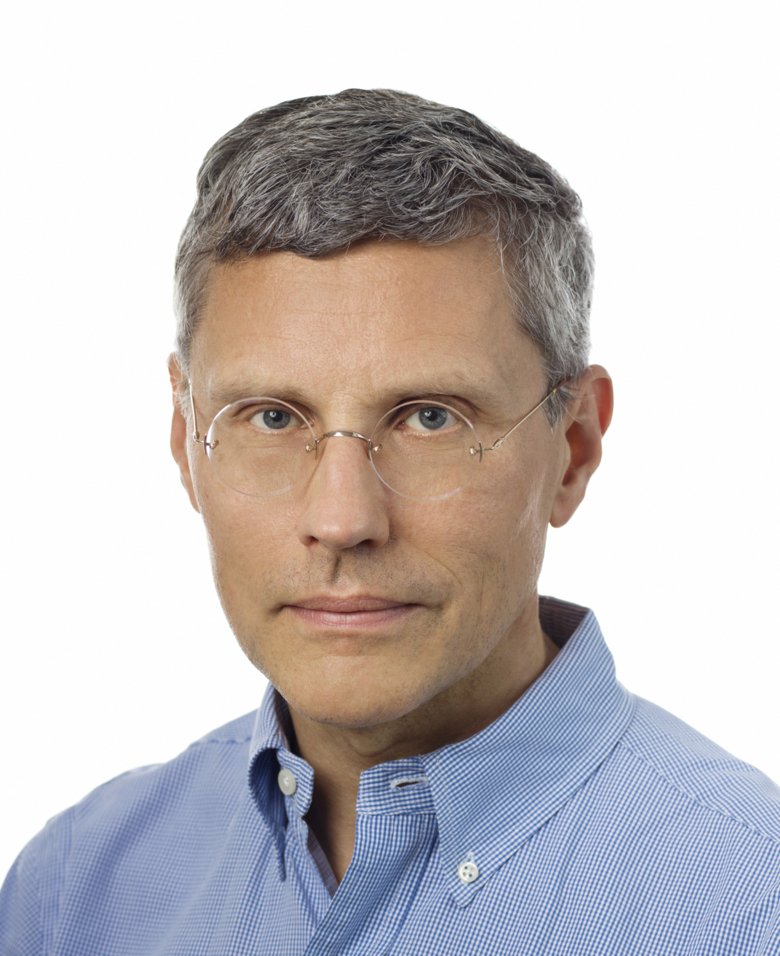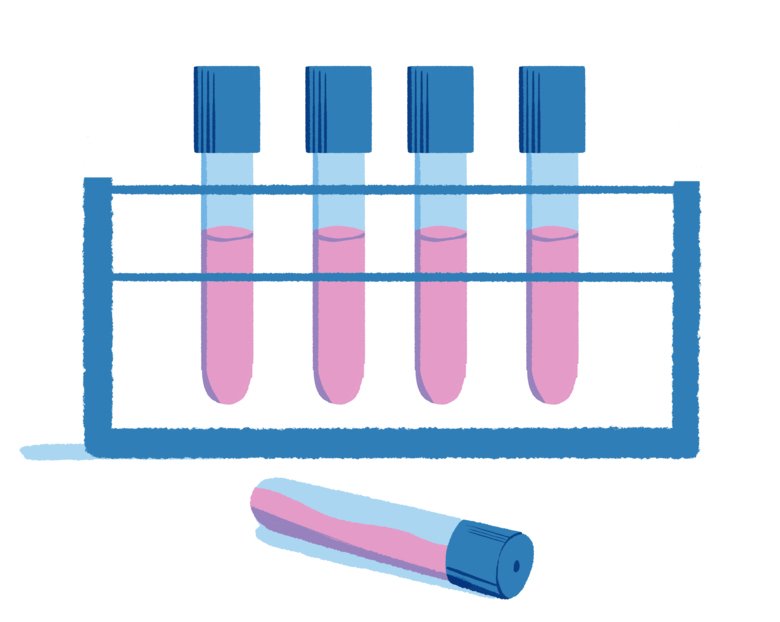The search for definite answers on prostate cancer
Many researchers agree that screening is a way to reduce mortality in prostate cancer patients, but so far the diagnostic methods have been inadequate. The researchers are working to improve the accuracy of diagnoses, and they are enlisting help from areas such as artificial intelligence.

Text: Fredrik Hedlund (in translation from Swedish), Illustrations: Amanda Berglund.
First published in Medicinsk Vetenskap number 3, 2019.
Prostate cancer is the most common form of cancer in Sweden. Around 10,000 men are diagnosed each year, a figure that can be compared to approximately 8,000 breast cancer diagnoses every year. If we look ar mortality rates, the difference is even greater. Just over 1,400 women died from breast cancer in 2017 while around 2,350 men died from prostate cancer the same year.
It is difficult to prevent prostate cancer, with the primary known risk factor being age. There is some evidence of a certain heredity factor, as the disease is more common in certain families, but this may possibly be explained by an increased tendency to test for it among those with a close relative affected by prostate cancer.

“We cannot eat healthier, run more or smoke less. There are no risk factors that we can influence. In addition, no symptoms present until the cancer has spread,” says Henrik Grönberg, Professor in Cancer Epidemiology at the Department of Medical Epidemiology and Biostatistics, Karolinska Institutet, and senior physician and head of the Prostate Cancer Center at S:t Göran Hospital in Stockholm.
The only way to reduce the risk of dying in prostate cancer is therefore to find the tumour early enough to treat it. As the tumour does not present any symptoms until it is too late, the obvious approach is general screening, as with the mammography that is done to identify breast cancer at an early stage. But this has not yet been introduced in Sweden as the diagnostics are inadequate.
Since the mid-90s it has been possible to do a so-called PSA test, which measures the prostate-specific antigen, PSA, in the blood. The problem is that the PSA level is not particularly specific to prostate cancer and testing results in a number of problems. One problem is overdiagnosis.
“About one third of all people who receive a prostate cancer diagnosis today have been diagnosed unnecessarily,” says Henrik Grönberg.
Treatment options
This means a cancer diagnosis, with all the worry that this entails, but it also means that a decision must be made on possible treatment. In the case of prostate cancer that has not spread, the treatment options are either to surgically remove the prostate gland or to kill the tumour with radiation. Both treatments are effective but have a fairly high risk of leading to side effects such as incontinence and/or impotence. If the PSA test unnecessarily results in a diagnosis, the treatment and all side effects are also unnecessary.

But this is not the only problem.
“With today’s diagnostics, we surely also miss 30-40 per cent of those who have prostate cancer and would need to be treated. Many people talk about overdiagnosis, but underdiagnosis is as big of a problem,” says Henrik Grönberg.
Current diagnostics for prostate cancer are thus not at an adequate level. This is why the National Board of Social Welfare has repeatedly said no to introducing general screening for prostate cancer. This issue was considered by the board as recently as last autumn, and again the answer was no despite it being proven that general screening would save lives – the price in the form of side effects is still too high.
But the board has been criticised for its decision and many argue that their view is too narrow when it comes to this issue.
“When the National Board of Social Welfare said no to screening, the question was whether screening is better than no screening. But this is not a relevant comparison, as there is already a form of unorganised mass screening under way. In Stockholm, around half of all 70-year-olds have been tested in the past two years,” says Olof Akre, Professor of Oncological Surgery at the Department of Molecular Medicine and Surgery, Karolinska Institutet, and senior physician and head of the prostate cancer care flow at Karolinska University Hospital.

He says that a large number of PSA samples are taken in Sweden, but that these samples are currently collected in a way that is anything but optimal. Many people are being tested who do not need to be, while others who could benefit from such testing miss out because they do not request it. Several regions, including Stockholm, are now instead preparing for organised prostate cancer testing where men of the right age will receive information on the test, be invited for testing in a structured manner, but be given the option of whether or not they wish to be tested. This is a development that he supports.
“An organised testing programme would structure the testing so that the processing would be done in an orderly way. This will increase the benefits and cost-effectiveness, but also reduce the damage from testing,” says Olof Akre.
Introducing general screening
At the same time, work is being done to establish a diagnostic method that is adequate for the purposes of introducing general screening. Henrik Grönberg has developed the Stockholm 3 test, which is a blood test that, in addition to PSA, also measures additional markers, both other proteins and genetic markers. In a large study involving nearly 60,000 men, he was able to show already in 2015 that the new test could reduce the number of tissue samples by 32 per cent and the number of tissue samples without cancer, which were thus taken unnecessarily, by 44 per cent.
That same year, the Göteborg 2 study started wherein 40,000 men in western Sweden are invited to be tested. PSA testing is combined with an MRI scan of the prostate in order to control tissue sampling in a better way than is done today. The aim is to reduce both overdiagnosis and underdiagnosis. Some results are expected to come next year, but the final results are not expected until 2035.

A similar study is also under way with the Stockholm 3 test, where 25,000 are invited to undergo a combination of the Stockholm 3 test and MRI-controlled tissue sampling, called Sthlm3MRI. In a smaller study of just over 500 patients, which was published in Läkartidningen last year, Henrik Grönberg and his research group observed that the combination is effective and reduces the total number of biopsies that need to be taken, while at the same time more men were identified who had prostate cancer in need of treatment. The large study is led by Tobias Nordström, researcher at the Department of Clinical Sciences, Karolinska Institutet and senior physician at Danderyd Hospital. And the aim is to reach a decision on the screening issue.
“Our goal is to identify at least as many men with cancer in need of treatment using the new method compared with the old, and at the same time to spare men from risky investigations and unnecessary diagnoses. The hope is that this study will offer evidence that the National Board of Health and Welfare can use to decide whether it is of value to introduce screening,” he says.
The results are expected as early as next year. The National Board of Health and Welfare has also indicated that they will once again address the issue when there is new data to review, so that it is not impossible that a decision regarding screening for prostate cancer will be forthcoming.
Already data available
According to Henrik Grönberg, however, there is already data available indicating how it will go. The health region in Stavanger in Norway transitioned from the PSA test to the Stockholm 3 test two years ago. They have already been using MRI to control the tissue sampling for five years now, so they are able to show what happens when the PSA test is exchanged for the Stockholm 3 test, all else being equal.

“The effects were much more dramatic than they had expected. They identified around twice as many clinically significant cancers and reduced the number of small benign tumours by 30-40 per cent,” he says.
Some argue that Henrik Grönberg particularly favours the Stockholm 3 test as he, as originator of the test, has several patents on it, but he feels that this is ignorant criticism.
“That’s how the system works. We have to establish patents in order to even get a product into production. An essential aspect of the mission we have as researchers is to commercialise our discoveries so that they will benefit the patients. Then others can assess the science and determine whether it is sound or not. But the numbers are clear and also come from other researchers, so I feel fairly confident in this regard,” he says.
The Step following blood tests and tissue sampling also needs to be improved so as to increase the accuracy of the diagnoses. The assessment of the tissue samples, or the biopsies, which is performed by special pathologists has indicated significant variation between different pathologists, as well as from one and the same pathologist on separate occasions.

“A problem is that there is a degree of subjectivity in the assessments, both in terms of diagnosis and the gradation of the severity of the prostate cancer,” says Lars Egevad, Professor of Pathology at the Department of Oncology-Pathology, Karolinska Institutet and senior physician at Karolinska University Hospital.
He has, among other things, written the last two editions of the WHO classification for prostate cancer pathology, and he is a principal author of international guidelines on how to interpret tissue samples.
He has devoted a lot of time to the issue of the great variation in pathologists’ assessments. Among other things, he has set up an international image database online where twenty or so of the world’s most prominent pathologists have posted biopsy images and have each graded them independently without knowing how others have assessed them. The images were initially hidden from everyone aside from the participating pathologists. It was only when they had reached a consensus in their assessment that the images were made public.
“The idea is firstly to standardise the gradation of prostate cancer and secondly to use the image database in the training of new pathologists. It is now possible to go in and test yourself, and it’s a tool that has been used by a large number of pathologists across the world,” he says.
Useful in other ways
However, the images assessed by the experts along with the other 80,000 biopsies resulting from the Stockholm 3 study, where Lars Egevad personally assessed all the samples, have also been useful in other ways.

Together with a research team led by Martin Eklund, Associate Professor of Biostatistics at the Department of Medical Epidemiology and Biostatistics, Karolinska Institutet, Lars Egevad has used the material to train an AI, artificial intelligence.
“The development of AI technology has moved very fast in recent years, particularly in terms of image and pattern recognition. The main reasons are that computers have become increasingly powerful in the past 5-7 years and that there is more available data with which to train the AI systems. We have used this to create an AI that can read biopsies from men tested for prostate cancer,” says Martin Eklund.
And in evaluations, the machine has shown that it works surprisingly well.
“When it comes to the gradation of severity in prostate cancer, the AI is in the same range as the international experts, which is incredibly impressive, and when it comes to diagnostics, to determine whether or not it is cancer, the AI’s accuracy has proven to be exceptional,” says Lars Egevad.
Artificial intelligence
The artificial intelligence is still under evaluation in studies but is scheduled to be put into clinical use as early as the beginning of next year. But Lars Egevad is eager to play down the worst science fiction associations right away.
“Sometimes it’s said that artificial intelligence will take over diagnostics and completely replace human involvement, and it’s possible that such a development could come to pass, but it must be understood that this is something that is far in the future,” he says.
Instead, the idea is to let the AI make a selection from images that may contain cancer and disregard those that definately do not.
“We then have a security system, a bit like those in cars that give you warnings and assistance, but the driver is still in control. It will be a security system to help the pathologists not to miss any changes. It is then possible to have a very high level of accuracy and, in principle, not have to miss any cancer cases,” he says.
In Martin Eklund and Lars Egevad’s AI project, they have trained the artificial intelligence using the assessments of the pathologists. Such algorithms can enable quality assurance and efficiency, but never become better than the best pathologist.

Olof Akre runs a study where he uses data from the National Prostate Cancer Register that was started in 1998. Together with his research group, he has selected 2,200 men who have died from prostate cancer and matched them with as many patients who did not die, and they are now conducting an analysis of their tissue samples. The idea is to then train an artificial intelligence to recognise pathology patterns for tumours in those patients who died and those who did not, with the hope of identifying something new.
“If we train the AI using mortality data instead of the pathologist’s assessment, it is possible to identify and quantify morphological patterns that the human brain cannot detect, and then hopefully we can improve our prognostics,” he says.
One thing that also needs to be done before any type of screening is introduced is to raise awareness on prostate cancer among the population. This is the opinion of Yvonne Brandberg, Psychologist and Professor in Healthcare Sciences specialising in Oncology at the Department of Oncology-Pathology, Karolinska Institutet. She and her research group conducted a study of the men who were invited to participate in Henrik Grönberg’s initial Stockholm 3 study. They sent out a questionnaire to 10,000 men three months before they were invited to a Stockholm 3 test, after which they examined the differences between those who accepted the invitation and those who did not.
“What we could observe was that those who did not show up to do the test were less concerned, had poorer health and were less informed. We think it may be a socioeconomic issue, if you know more then you worry more too,” says Yvonne Brandberg.
But she emphasises that the knowledge on prostate cancer in both groups was severely lacking.
“Fewer than half answered correctly to the questions on prostate cancer in both groups. And none of these questions were hard,” she says.
She believes that before a decision is made to get tested, a person must be fully informed and aware of the consequences of different outcomes.
“The vast majority get tested to make sure everything is okay. They are not prepared for a cancer diagnosis,” she says.
A shocking experience
In her role as a psychologist, she has frequently met men who describe being told that they have prostate cancer as a shocking experience.
“Their first thought is ‘This isn’t happening’, and then the word ‘cancer’ is the only thing they hear and it only registers as death. Many describe it as being cold-cocked, and most don’t think it would happen to them,” she says.
After that, you can easily spiral into a sort of chaos, at the very moment that you are expected to make an important decision on whether or not to undergo treatment, which is not so easy. Therefore it is important to have asked yourself these questions and thought through what you want to do before being tested, she thinks.
A lot of research currently being conducted is aimed at improving the diagnosis of prostate cancer in order to enable organised or general screening. But there is also a lot of research to improve treatment when a clear diagnosis has been established.

“Prostate cancer has been trailing far behind other forms of cancer, and there are still a lot of opinions when it comes to choice of treatment. One good example is the choice between radiation or surgery. Instead of combining these as is the case within many forms of cancer, patients often either get one or the other,” says Olof Akre.
Since 2014, he has been running a large study at 23 centres across Scandinavia with the ambition to show whether surgery, radiation or a combination of the two is the best treatment for locally advanced prostate cancer. Thus far, 550 patients have been included out of the total 1,200 planned. Unfortunately the final results will be not be available until 2032.
“If we’re going to answer the question of what treatment gives the best survival rates in prostate cancer, there has to be a long monitoring period. The cancer is usually so slow in its growth that a quick study is not possible. But we also look at quality of life and the figures we have one or two years after treatment is finished, so we will be able to compare the side effects of the treatments much sooner,” she says.
The most serious form of prostate cancer is when the cancer has spread from the prostate to other parts of the body, or has metastasised.

“Around 2,500 men are diagnosed with metastatic prostate cancer each year. These men will unfortunately die from their illness; recovery is currently unheard of. However, the process can sometimes be slow, and many men live with the disease for so long that they end up dying from something else,” says Johan Lindberg, senior researcher at the Department of Medical Epidemiology and Biostatistics, Karolinska Institutet.
It is possible to slow the cancer’s progression using hormone therapy over several years, but it then starts to grow again. There are still some fairly expensive drugs left to try. A patient will normally undergo some additional treatments, but less than half of the patients respond well to each new treatment attempt, and the remainder only get the side effects.
Analysing regular blood samples
Johan Lindberg is therefore conducting a study where he is analysing regular blood samples to try to identify biomarker signatures in circulating tumour DNA that can predict which patients will respond to treatment and which ones will not. The study has an adaptive design, which means that the navigation toward different treatments will change during the study depending on how the patients respond.
“The study learns from previous outcomes to find workable combinations of biomarkers and treatments as quickly as possible,” says Johan Lindberg.
In addition, it will be possible to include new treatments that are being developed and compare these to the existing ones.
The best thing a middle-aged man can do at the moment is to learn more about prostate cancer and the tests available. Sooner or later, this knowledge will come to use.
“You have an opportunity to reduce your risk of dying from prostate cancer, but there is a cost linked to this and you need to consider if you are prepared to pay the price,” says Olof Akre.
